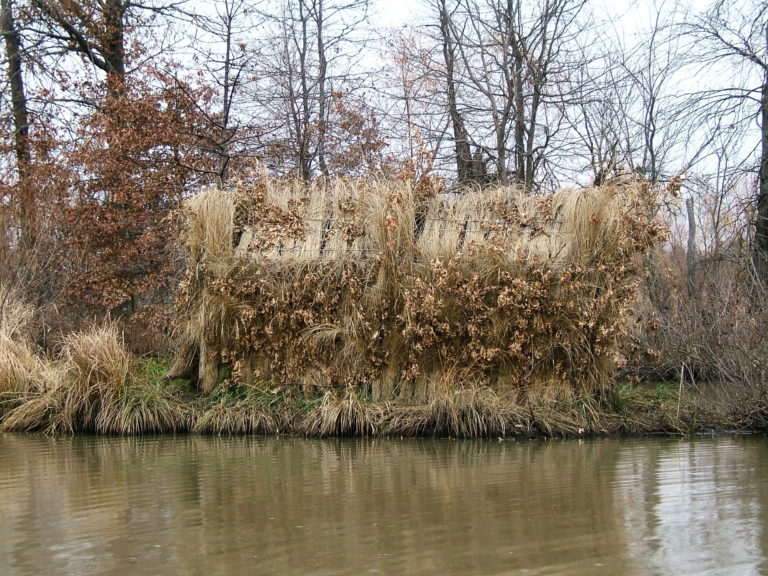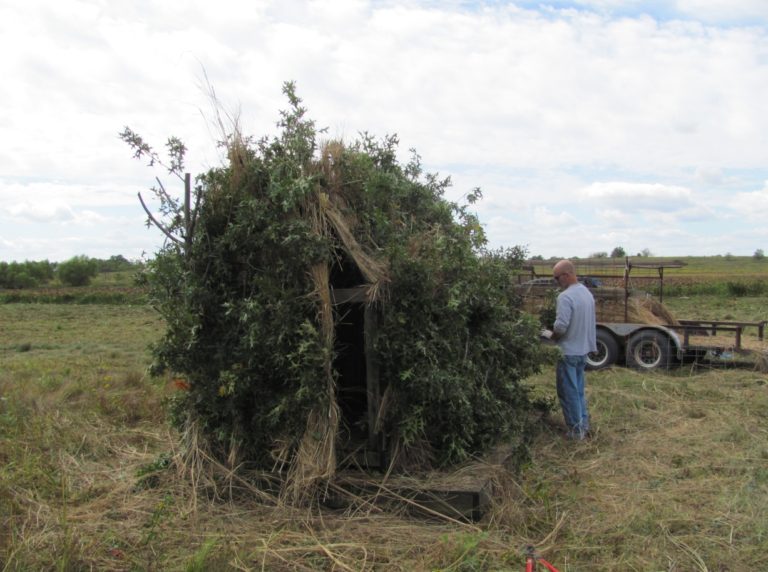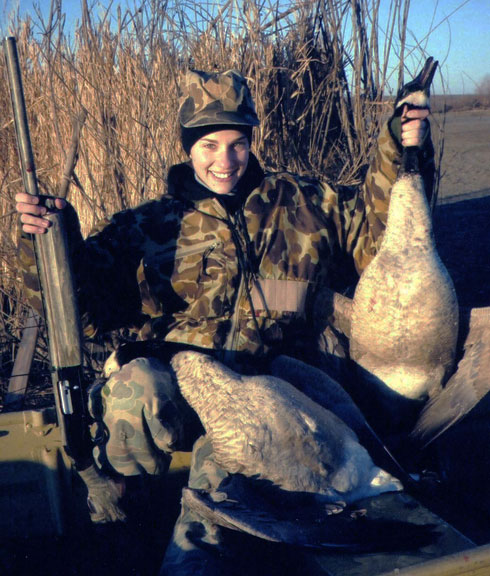© 2024 All Right Reserved.
Mid-America Hunting Association
This Association has built private duck blinds for over four decades. Many lifetime relationships with some business connections have developed over many years of Association hunters meeting each other in these binds. Include two who would marry later.

Bruce(left) and Jon Sr. have built, maintained and covered MAHA blinds together since 1984. Some tasks have been more difficult than others.

An after photo of the same duck blind to left on the South Grand River flyway.

A Missouri duck blind on one of our managed wetlands. We picked this location after watching ducks feeding on acorns in this small pot hole.
We’ve used this same design to construct duck blinds for many years. It’s simple. They can be disassembled and moved from one spot to another if we need to do so. Each blind is 10’ long by 5’ wide, framed with 2”x 6” lumber, a roof, floor, seat, gun rack, door.








Our managed Missouri wetlands with duck blinds have all been developed next to rivers or creeks that flood on occasion. We anchor our blinds to endure severe flooding, but every once in a while something gives causing us to loose a one or two. A mound we built to place this duck blind on eroded over several years. Major floodwater toppled it. Carried it over 200 yards from its place of origin. Bruce, Allen plus Jon winched it up on a levee, disassembled then drug it piece by piece using a four wheeler to its mound.
It took some swampland engineering to re-assemble it, but Allen and Bruce have decades of carpentry experience. In a couple of hours it was back up, anchored, ready to be covered for another season. It faces Parsons Creek, which feeds Fountain Grove Wildlife Area in north central Missouri. This marsh covers 60 surface water acres having 2 permanent duck blinds.
Water levels are controlled by drain/intake pipes and drop log structures.
We drain 50% of Association wetlands if weather permits, but rotate every year since water is mandatory to duck hunt our duck blinds.
The photo above is Jon Jr. getting it done the old fashion way. Just like the duck blinds some waterfowl projects are easier than others and you never know what to expect when you arrive.
Portable dog blinds and mud huts are made for every type of dry or wetland habitat the Association has to offer. We recommend each hunter provide their own for the dogs best comfort, especially late season when it gets cold.


We furnish all hunters detailed maps of every wetland with blinds numbered. Some can be found during darkness any first time, but we encourage scouting during daylight hours to become familiar with water depth. Decoys are furnished by hunters.
Like all of our hunting, duck blind usage is controlled by our telephone or online reservation system. Reservations can be made in advance the earliest up to 30 days prior to your hunting day. Or, a minute ahead of time the day of you hunt online 24/7.
Some blinds are easy to access while others are difficult. Four-wheelers are allowed to haul hunters, their gear to/from duck blinds on all wetlands. But just like scouting, we recommend to become familiar with the terrain and water conditions during daylight hours for safety purposes.
One of our duck blinds on a Missouri wetland that was drained during summer. A quality stand of volunteer smartweed and millet was established. Weather permitting, shooting pools are mowed around blinds and wade-in area shooting pools. The blinds are covered and water is controlled is controlled by holding water or through intake/drain stop log structures. We rotate which wetlands to drain every year to always have water for our duck hunting.
The same blind after a good days hunt with 30 plus year members Bob and Dan. Duck hunters share an advantage being able to hunt a variety of duck blinds in Missouri’s North and Middle Zones, where wetlands food sources with water levels are rotated on a yearly basis. Even during drought years, we have always had enough water to accommodate all of our waterfowl hunters.
Some duck hunt for fun, others duck hunt to kill ducks. Our duck blinds are available to meet needs of both. During peak migration you can be assured you will see ducks working areas around our duck blinds, but bringing them into shooting range is up to every hunter’s ability.





A view of a decoy spread from inside out of a blind. This particular year the shooting pool was planted to Japanese millet. We were fortunate to get a small overflow to flood this marsh.

A flock of late season mallards coming into one of our Missouri managed wetlands.


An inside view inside our duck blinds. Nothing fancy, but they keep you dry and warm, you’re concealed from ducks sitting on a seat out of the water. Some hunters say they don’t like to hunt out of blinds because they prefer to pick their own spot to set up. When temperatures drop below freezing with wind, 99% of our duck hunters head to our permanent blinds.
A two man limit of wood duck, teal, gadwall and wigeon. Early season action can be furious in both Missouri’s North and Middle Zones.
© 2024 All Right Reserved.
Mid-America Hunting Association
© 2024 All Rights Reserved
Mid-America Hunting Association